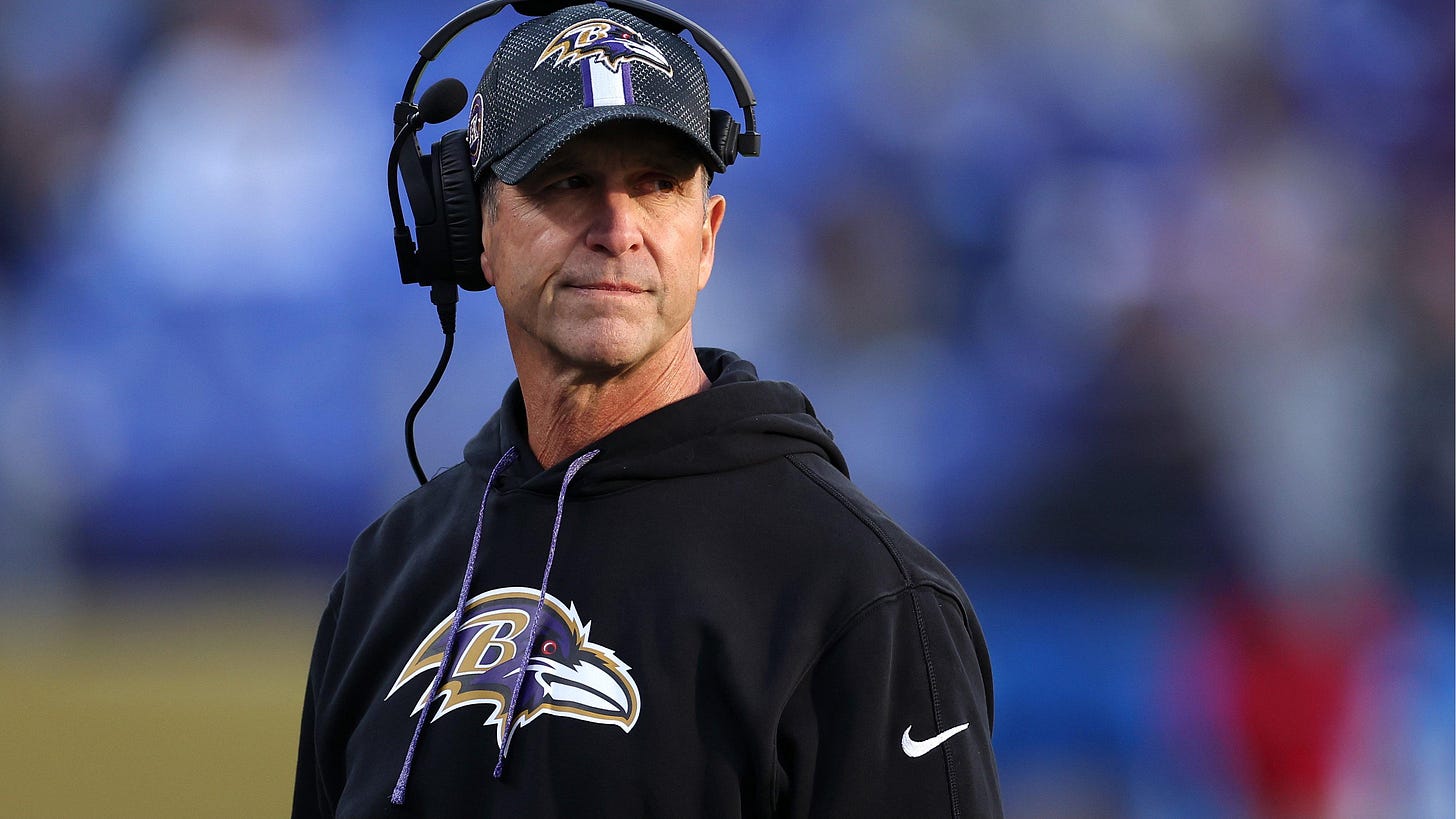How Emotional Intelligence Separates Leaders from the Rest
Values First, Feelings Last
Gracing the cover is John Harbaugh, steady when others shake, guided by standards that never yield, and proof that principle beats mood every time.
Leadership will always reveal what governs you. Not the polished bio. Not the aspirational statements in a quarterly meeting. When it’s late, when you’re tired, when pressure is unrelenting, your decision-making exposes whether you’re anchored to principle or at the mercy of mood.
This is where emotional intelligence proves its worth. It’s not a feel-good metric or a personality perk. It’s a skill set that decides whether you can lead in chaos without becoming chaotic yourself. At its highest level, it is the refusal to outsource your choices to temporary feelings, no matter how convincing those feelings seem in the moment.
Why Mood-Driven Leaders Collapse
In the absence of emotional intelligence, leadership becomes reactive. The moment conditions change, so do the standards.
Some collapse subtly:
Over-promising to pacify conflict.
Avoiding hard calls to protect personal comfort.
Chasing short-term wins that leave long-term damage.
Others collapse loudly:
Public outbursts that fracture team trust.
Erratic changes in direction that undermine credibility.
Knee-jerk decisions that create more fires than they solve.
Both have the same root: the absence of a stable internal framework. Without one, moods drive the wheel, and moods are notoriously poor navigators.
What Emotional Intelligence Really Demands
At its core, emotional intelligence is the ability to recognize what you feel, understand why you feel it, and choose your actions based on something sturdier than emotion.
That choice point, the space between stimulus and response, is where leaders distinguish themselves. It is easy to act well when conditions are smooth. It is much harder to act well when frustration, fear, or excitement is spiking.
The emotionally intelligent leader refuses to be a hostage to those spikes. They make decisions that align with values they’ve chosen in advance, not with the temperature of the moment.
The Discipline of Self-Regulation
Most people misunderstand self-regulation. They think it means suppressing emotion until it disappears. It doesn’t. It means understanding your emotional state so completely that it can’t hijack your judgment.
This is not passivity. It’s active governance.
You feel the emotion.
You name it without distortion.
You decide how to respond based on a predetermined set of standards.
It is the habit of ensuring your mood is one input, not the driver.
The Cost of Getting It Wrong
When leaders consistently let feelings dictate decisions, the consequences are cumulative:
Loss of credibility — Teams notice inconsistency faster than leaders think.
Erosion of trust — If people don’t know which version of you they’re getting, they won’t commit fully to your direction.
Reactive culture — Teams mirror leadership. A reactive leader creates a reactive team, where emotional contagion replaces clear thinking.
In short, without control of your internal state, external influence will always be limited.
Principles as the Primary Operating System
Emotional intelligence is more than the avoidance of bad reactions, it’s the proactive design of an internal operating system. The leader who commits to this understands:
Values are not situational. They are the baseline for every decision.
Consistency in action builds a reputation that compounds over time.
Reliability under pressure is not accidental, it is engineered.
This is the invisible contract you sign with those you lead: No matter the pressure, you can count on me to act from what’s right, not from what’s easy or from what I feel in the moment.
Systems to Keep You Principle-First
Pre-Commitment
Write your top three leadership principles and keep them visible. Every decision should be filtered through them before action is taken.Pause and Measure
Build in a reflexive pause when emotions spike. Use the pause to measure your intended action against your principles.Trigger Awareness
Know the situations and people most likely to provoke you into mood-driven responses. Develop deliberate countermeasures in advance.Daily Review
At the end of each day, ask: Did I lead from principle or from mood today? Track patterns and correct them.
The Higher the Stakes, the Less Margin for Mood
At the top levels, whether in business, sports, or politics, pressure is constant. The difference between sustained success and burnout often comes down to how much of your behavior is pre-engineered by principle, versus improvised in the heat of emotion.
Leaders who last are not necessarily the most charismatic or the most gifted. They are the most consistent. They understand that stability under pressure is an earned skill, not an innate trait. And they treat emotional governance as seriously as they treat strategic planning.
Why This Is the Real Competitive Edge
Skill can be matched. Resources can be copied. Even strategy can be replicated. But the ability to operate from values under emotional strain is far harder to duplicate.
This makes emotional intelligence not just a leadership trait, but a competitive advantage. It influences how your team performs, how your peers view you, and how your opponents underestimate you.
Your Challenge: Principle Over Mood
Starting now, identify one upcoming decision where emotion is likely to interfere. Decide, in advance, the principle that will guide you. When the moment arrives, execute exactly as planned, regardless of how you feel in that moment.
Repeat this enough times, and your leadership will stop depending on good days. It will start depending on you.
Moods change. Principles scale. That is the mark of a leader worth following.
Bibliography
Goleman, D. Emotional Intelligence. Bantam Books, 1995.
Salovey, P., & Mayer, J. D. Emotional Intelligence. Imagination, Cognition and Personality, 1990.
David, S. Emotional Agility. Avery, 2016.
Brackett, M. Permission to Feel. Celadon Books, 2019.
Barrett, L. F. How Emotions Are Made. Houghton Mifflin Harcourt, 2017.


